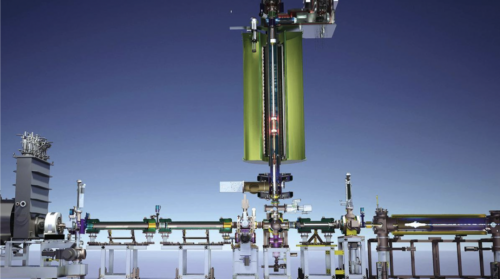Image courtesy of CERN Courier
Physicists theorize that before the Big Bang, our universe was composed of equal parts matter and antimatter. If this is true, why are we composed of only matter rather than antimatter or some combination of the two? The difficulty in dissecting this question lies in the lack of knowledge we have about antimatter.
Antimatter is the opposite of matter. For every particle, there is an equal and opposite particle, and when these particles collide, they destroy each other. If we were able to collect antimatter and touch it, it would vaporize us and a considerable radius around us. Nonetheless, a team at CERN, the European Organization for Nuclear Research, discovered a way to study antimatter and prove that antihydrogen atoms respond to gravity like regular matter. Their study paves the way for further research on the acceleration of antihydrogen atoms and brings us one step closer to understanding the differences between matter and antimatter.
In a recent publication in Nature, experimental particle physicist Jeffrey Hangst and his collaborators used a new technology called the ALPHA-g apparatus to test antihydrogen’s gravitational attraction to Earth. This vertical, four-story apparatus was designed and built by CERN to store antihydrogen atoms. “There’s no store you can go to and buy a machine that will produce and trap antimatter,” Hangst said. The apparatus’s vertical orientation is designed to assess the behavior of antihydrogen atoms as they drop down the structure. Researchers can then observe whether the atoms fall and escape through the bottom opening due to the force of gravity, or escape through a top opening, suggesting that they don’t experience gravity.
The experiment revealed that antimatter, like regular matter, generally falls and escapes through the bottom of the trap, with minor exceptions due to natural random fluctuations in the movement of atoms. This aligns with scientists’ hypotheses, but Hangst’s team was cautious to leave behind all expectations while designing their experiment. “As an experimental scientist, you’re not allowed to have expectations,” Hangst said. “You have to be completely neutral and design an experiment that will get any outcome.”
The thoughtful design required to produce informative results is a delicate art. “Something that’s overlooked in science is that the people who do the best job, who make the breakthroughs, are not just intelligent, but they’re creative and they think in a different way,” Hangst said. The basis of this experiment rested in the abilities of the novel ALPHA-g apparatus. Moving forward, this technology will have to be reimagined with great precision to determine the acceleration of antihydrogen atoms, as opposed to just assessing their general response to gravity.
Despite the mysteries surrounding antimatter, physicists like Hangst and his team at CERN are inching closer to uncovering the truth with each new experiment. Their determination is the driving force behind this operation, and the new knowledge about antimatter they uncover may reshape our understanding of the universe in the coming decades.

